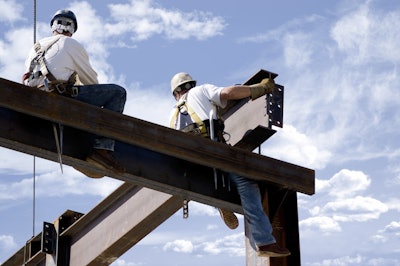
Construction company owners are in a unique position when it comes to assessing and helping their employees manage their health and wellness. Construction is difficult, demanding work, and having employees at the top of their game both mentally and physically is crucial.
The firms are also often small enough for company owners to be able to pinpoint a need for specific health initiatives—quitting smoking, for example. A health and wellness program could go a long way toward increasing productivity and reducing absenteeism, and it doesn’t have to be expensive to implement.
However, older workers dislike change, and can be resistant to programs they consider intrusive or invasive. With an aging workforce, construction firms might find a wellness program to be a tough sell. Still, that doesn’t mean you should just give up on the idea; investing in your employees’ well being shows you are concerned for them.
If you’re interested in implementing some type of health and wellness initiative, here are some ideas to get you started.
1. Gauge interest
Don’t assume your employees will be (or won’t be) interested in participating. You need to find out up front how many of your employees would like a wellness program, and what kind of program they’d like to be a part of. Define exactly what a wellness program means to you; a weight loss challenge is quite different than simply offering risk assessments, for example. Once you’ve outlined what you have in mind, ask your employees if they would participate.
2. Get people involved
If you find some of your employees are interested, ask them to meet with you informally for coffee (on company time, of course). If you involve them in decision-making processes, your employees will be more personally invested in the program. Have them brainstorm low-cost initiatives to implement during working hours. The suggestions might be anything from forming exercise groups to simply replacing junk-filled vending machines with healthier options.
3. Offer small incentives
Your program will most likely include assessment tools such as cancer screenings and stress assessments. Contact your insurance company (or go through a vendor) about the possibility of using personal online assessments. They’re inexpensive, voluntary and confidential. When employees complete an assessment, give them a small reward, such as a gift card for lunch. For bigger wins, such as quitting smoking, consider a bonus.
4. Focus on your employee pool
Tailor your screenings to your employees by reviewing your insurance claims data and targeting problem areas. Since you’re likely to have a majority of older men on your workforce, concentrate on areas that would be of interest to them, such as stress tests, heart health, high blood pressure and prostate health, for example.
__________________________________
Even if you find most of your employees won’t actively participate in an ongoing wellness program, as a responsible employer, you should still have some tools available for them to use. You can offer yearly health screenings at a reduced cost—or even no cost—through your insurance carrier.
Always have a variety of health information and tools available. You can download information to have posted in the break room; many sites offer free resources.
And speaking of the break room—although you may have vending machines loaded with soft drinks and potato chips—consider supplying water, juice and fruit at no charge to your employees. A proactive attitude will go a long way in showing your workers that you want and need them healthy and happy.













